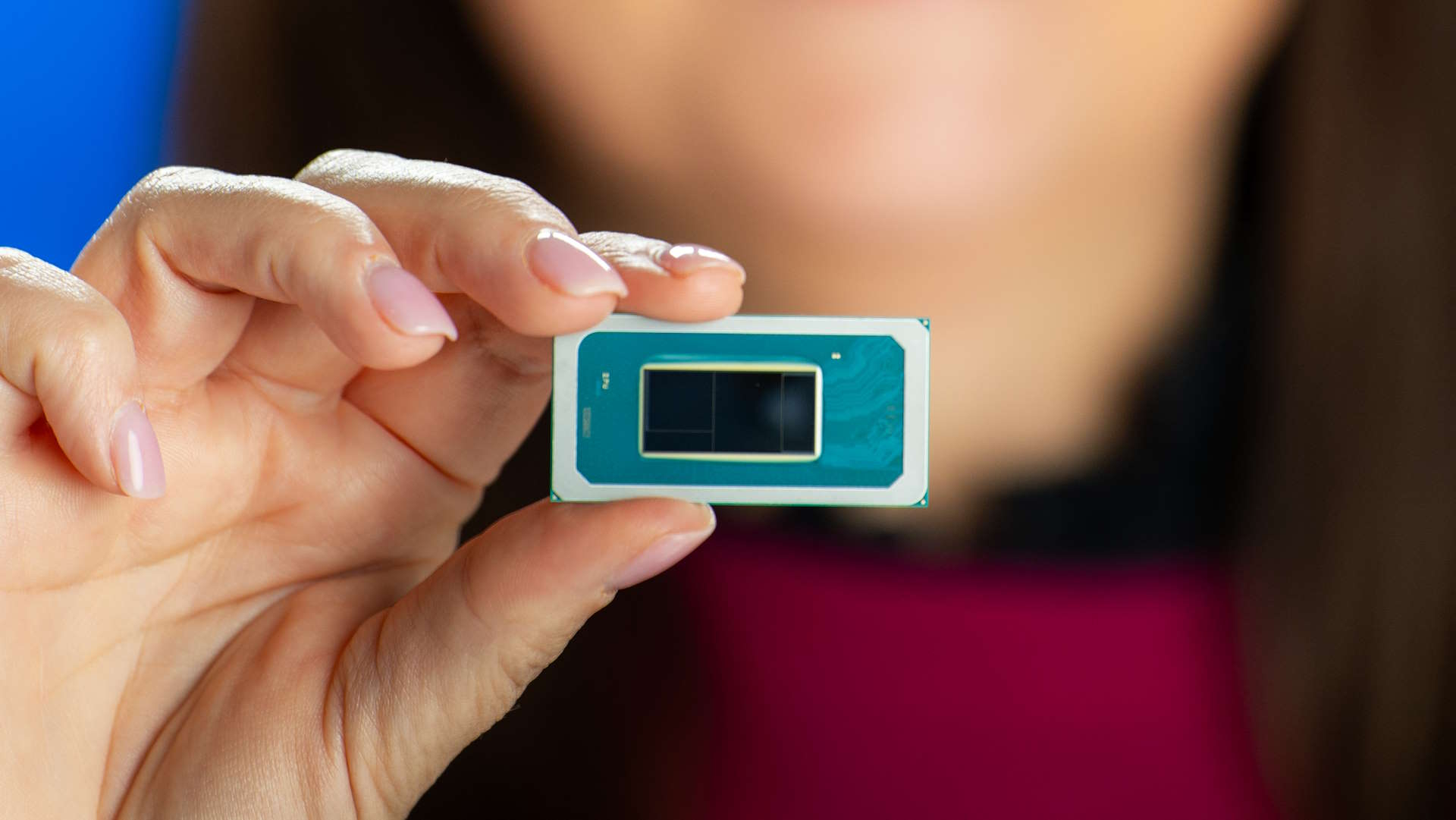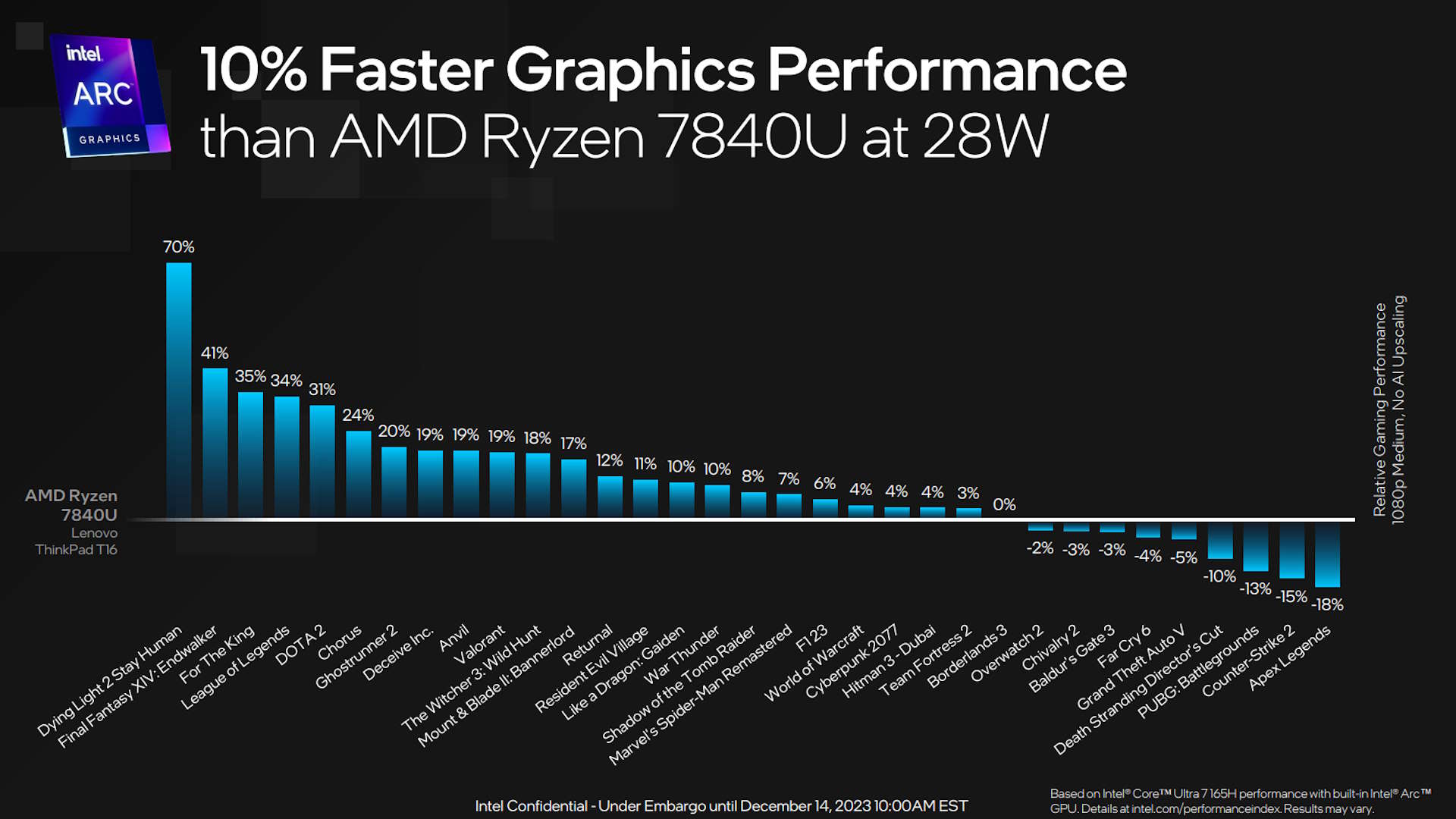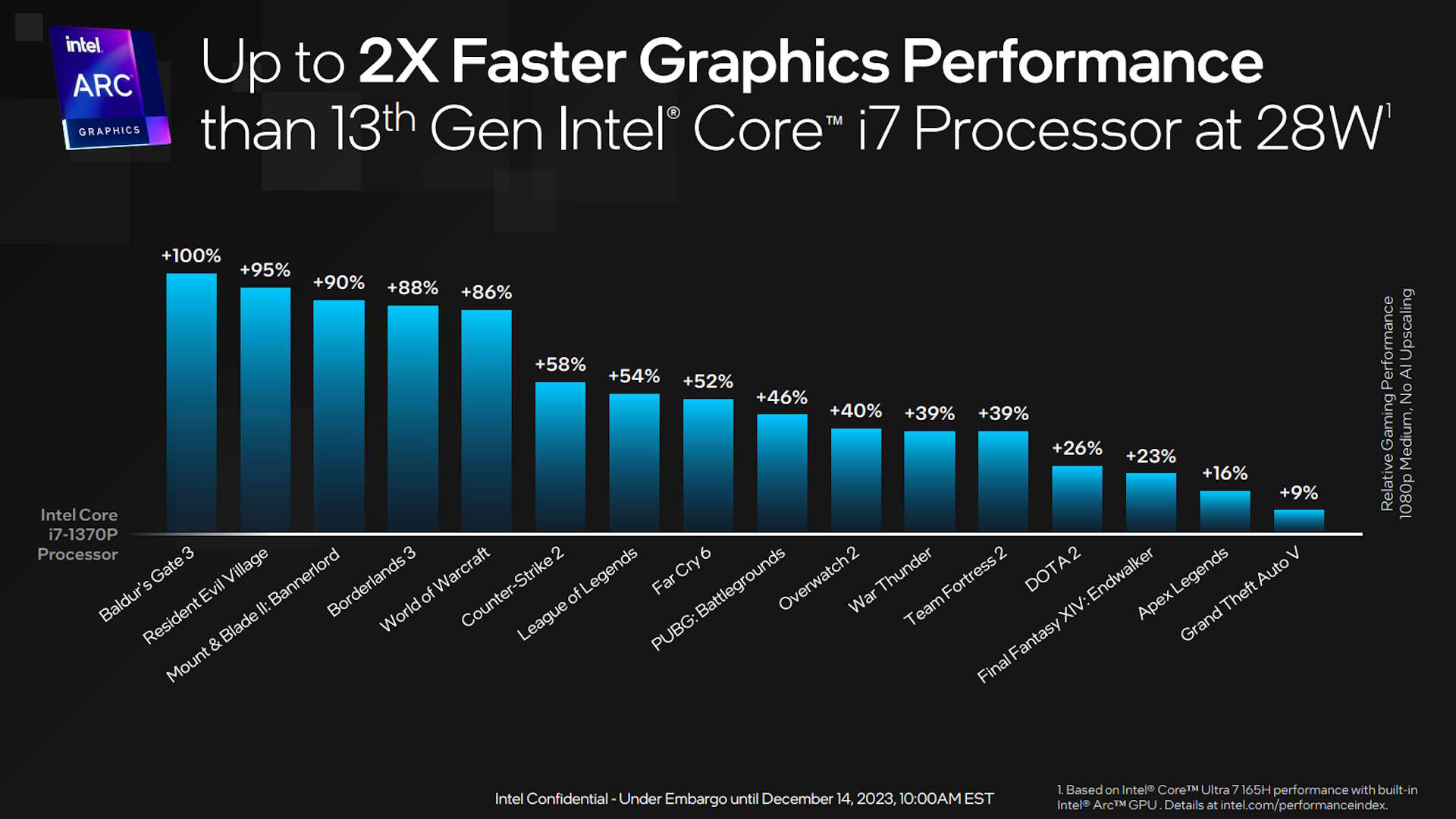
Intel's technically unified both its Arc discrete and integrated graphics drivers, meaning that all the performance boosts we've seen benefitting the Arc A750 and A770 (less said about the Arc A580 the better) will arrive on its new integrated GPUs around the same time.
Intel has just announced, and effectively released its new Core Ultra series of laptop chips. They represent Intel's first chiplet architecture (tiles in its own parlance), and it includes a significant upgrade to its laptop graphical prowess. The new Meteor Lake graphics tile includes up to eight new Xe LPG cores, which puts it roughly on par with AMD's 780M iGPU in the Ryzen 7 7840U.
It's actually claiming a 10% average frame rate lead over the red team's finest iGPU, but even if it's around the same level you're still looking at good 1080p gaming performance. And if you're getting a thin and light laptop with actually playable frame rates then you're going to want to stay at the cutting edge with driver updates.
Especially considering the last few Arc driver updates have added a significant extra level of gaming prowess to its GPUs. One in October delivered up to 119% higher frame rates and the November release boosted Halo performance by up to 750%. It must have been a damned slideshow before...
So yeah, you'll want the latest drivers. But historically that's been tough on the laptop side, where we've generally had to do some low-level tweakery to get around the actual laptop manufacturers restricting their machines to their own OEM drivers... which generally lag well behind a new GPU driver update.
That situation remains to a certain extent, but you're apparently no longer going to be locked out of updating a laptop's iGPU drivers yourself, with Intel providing an 'unlocked' generic driver that will contain all the base performance and game day one patch goodness we crave.


"On a technical basis," Intel's Tom Petersen tells me, "the driver is unified, and we do all the QA at the same time. So there's a driver available that supports the discrete and the integrated, and they're roughly coincident. And we make that driver available—you can think of it like an unlocked driver that we post to a website—and anybody can download and install it.
"Now that driver does not have OEM customisations. So if there are specific buttons or specific modes that require OEM activation you won't get that if you overwrite your driver with that unlocked driver."
It's not perfect, and may mean that some OEM specific features, such as the 'Endurance mode' designed to lock frame rates at 30 fps when running on battery power, aren't available if you've overwritten your OEM driver with the generic option.

Best gaming PC: The top pre-built machines.
Best gaming laptop: Great devices for mobile gaming.
But it does mean that if you're having issues with a new game's performance, and Intel releases an early hotfix to patch out any Arc-based problems, you'll be able to at least get the gaming performance you're after and then update with the driver specific to your actual laptop down the line.
"Some day you'd like all that to be automatic," says Petersen, "but today there's still a relationship between the GPU driver and OEMs to provide a complete solution for notebooks, but in parallel we make available this 'unlocked' driver on our website.
"The solution really here is much more rapid adoption of the OEM process, trying to push through the OEM validation phase more quickly to get users enabled in real time. And Intel can only do so much there, but we are working with OEMs to make that a more rapid process."




!["[T]he First and Fifth Amendments Require ICE to Provide Information About the Whereabouts of a Detained Person"](https://images.inkl.com/s3/publisher/cover/212/reason-cover.png?w=600)


